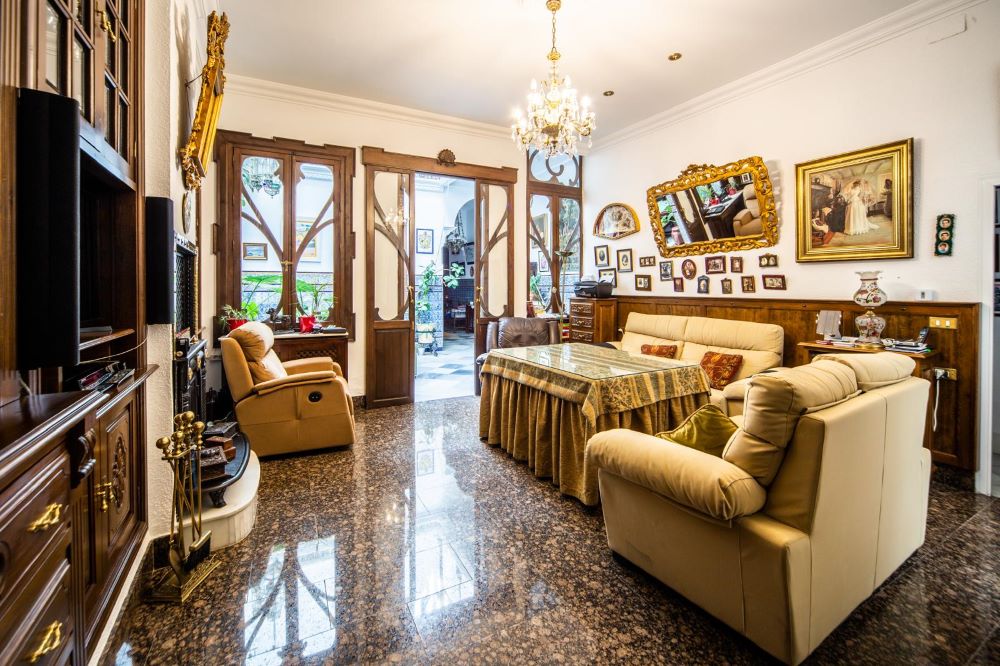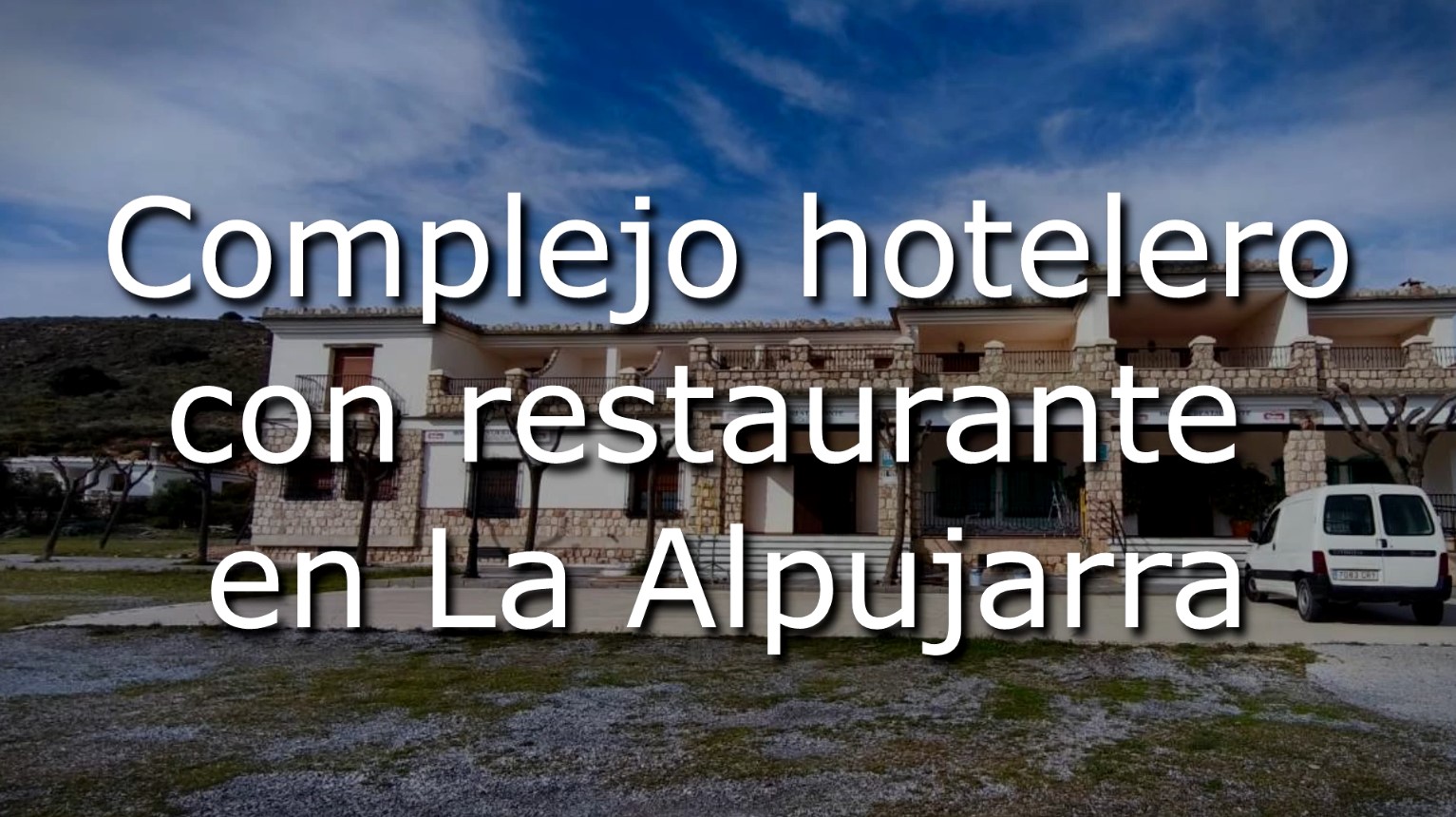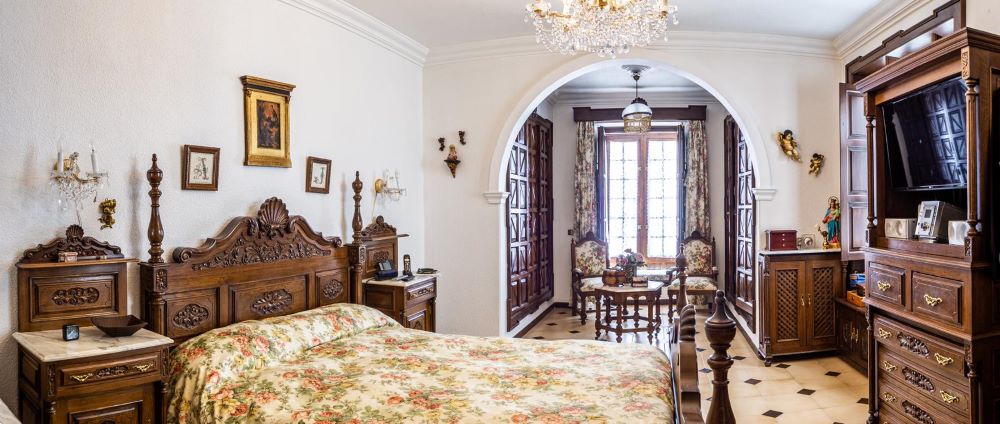
For many years, buying property to rent out has been seen as a simple and reliable strategy for generating passive income, achieving long-term financial stability, and one of the most popular ways to build wealth in real estate.
As investor Tristán writes in his analytical article for SubastaNomics:
“Invertir en el negocio del alquiler de viviendas es una de las estrategias más seguras y rentables para generar ingresos pasivos y construir patrimonio a largo plazo.”
“Investing in residential rental property is one of the safest and most profitable strategies to generate passive income and build long-term wealth.”
Housing is a basic human need—so demand for rentals will always exist.
Key advantages of rental investment include:
- Steady passive income and long-term financial security;
- It’s the only business where you start earning from day one;
- It’s the best hedge against inflation—both rental prices and property values naturally adjust over time, ensuring capital appreciation if you decide to sell;
- Unlike investing in mutual funds or company shares, you retain full control over your asset;
- Financing is more affordable—mortgage interest rates are significantly lower than those for standard business loans.
What Types of Property Are Most Profitable for Investment?
For Long-Term Rentals
The most profitable properties remain apartments on the first three floors (without elevators), with 3 bedrooms, located in cities experiencing strong demographic and economic growth—ideally near universities, hospitals, and public transport.
For Short-Term (Holiday) Rentals
There is consistent demand for high-end properties in tourist-favorite locations, such as:
- Beachfront apartments with sea views;
- Historic city-center homes for culture and sightseeing lovers;
- Luxury villas with pools and tennis courts, located near the coast or mountain resorts, close to leisure and entertainment options—ideal for families or large groups, and often more cost-effective and comfortable than staying in a hotel.
The Right to Housing Act – Law 12/2023 of 24 May
In May 2023, Spain enacted the new Right to Housing Act (Ley 12/2023). While its stated goal is to protect tenants and make housing more affordable, in practice it has significantly complicated life for property owners—especially in major cities with high demand for long-term rentals.
Key provisions causing concern among investors and private landlords
- Rent “freezing” in so-called “tensioned” (tensionadas) zones — such as Madrid or Barcelona. When a new tenant moves in, the rent cannot exceed the amount charged under the previous contract, even if you purchased the property at current market value.
- Mandatory contract renewal: Landlords cannot simply refuse to renew a lease. If you qualify as a “large landlord” (owning more than 10 residential units or over 1,500 m² of residential space), you are legally required to extend the rental agreement by up to 3 additional years—even if you intend to use the property yourself.
- Reclaiming your property for personal use is extremely difficult. It is only possible with a court order and under very specific circumstances. Courts routinely delay eviction or possession proceedings for 12–18 months, especially if the tenant claims to be in a “vulnerable situation” (e.g., low income, children in the household, etc.).
- Higher taxes on vacant properties: Municipalities may impose a surcharge of up to 150% on the IBI property tax for owners of four or more unoccupied residential units. Though framed as an “anti-speculation tax,” in reality it penalizes owners who are unable to rent out their property or are renovating it.
- Tax incentives apply only to “social” rentals: The income tax (IRPF) deduction on rental profits can increase from 60% to up to 90%—but only if all of the following conditions are met:
- The property is located in a “tensioned” zone;
- The new rent is at least 5% lower than the previous one;
- The tenant is aged 18–35;
- Or the unit is part of a government-subsidised social housing programme.
This policy strongly favours low-margin, subsidised rentals and actively discourages market-rate leasing.
The law systematically limits owners’ rights while maximising tenant protections—even in cases of deliberate non-payment or abuse:
- It removes the owner’s right to set a market-based rent;
- It limits the ability to choose tenants;
- It makes exiting a lease extremely difficult;
- It increases financial and legal risks;
- And it creates significant legal uncertainty.
It’s no surprise, then, that many private landlords have withdrawn their properties from the rental market, fearing the risks, bureaucracy, and loss of control over their own assets.
What Has the Rental Housing Shortage Led To?
The rental housing stock in Spain is at a historic low. Demand for rentals remains strong, but supply has sharply declined — according to the 2024 Annual Spanish Residential Market Report.
Both rental prices and secondary-market property prices are rising rapidly — by 10–12% per year in 2024–2025. For example, 60 m² apartments on the outskirts of Madrid, which rented for just 450€ a decade ago, now cost at least 950€ per month.
Competition among landlords has largely disappeared, creating a unique opportunity for professional investors who know how to operate under the new market conditions.
For investment purposes, we recommend looking not at Madrid or Barcelona — where the strictest rental restrictions apply — but rather at Andalusia, where:
- No strict rental price caps have been introduced;
- Tourism rental licenses (VFT) are still being granted;
- Demand remains consistently high, driven by tourism, universities, and international relocations.
With a professional approach — calculating net yield, securing rent default insurance, and partnering with a reliable property management company — the rental business in Andalusia remains one of the most profitable in Spain.
How to Protect Yourself as a Landlord Under the New Law?
Under Law 12/2023, managing rental properties has indeed become more complex — especially in so-called “tensioned” zones (zonas tensionadas). However, professional investors can — and must — protect themselves, and even turn these challenges into advantages. Below are proven protective measures, tailored to 2025 realities:
✅ 1. Choose the right region
The law is not applied uniformly across Spain. In Andalusia (provinces of Málaga and Granada):
- No rental price ceilings have been imposed (unlike in Barcelona, Madrid, or Valencia);
- Short-term tourist rentals are not restricted (provided the property meets legal requirements);
- Most municipalities have not been declared “tensioned zones.”
👉 Tip: Consider investing in coastal towns like Almuñécar or Nerja, or historic city centers like Ronda.
✅ 2. Avoid becoming a “gran tenedor” (large landlord)
The law imposes stricter rules on those who own 10+ residential units or 1,500 m² of residential space.
If you’re a private investor:
- Hold properties under different legal entities or via your spouse/partner;
- Avoid registering 10+ units under a single name.
👉 Important: In “tensioned” zones, “large landlords” cannot set market rent — they must use the government reference index.
✅ 3. Always obtain a tourist rental license (VFT)
If you plan to offer short-term rentals:
- Andalusia still issues VFT licenses (unlike Catalonia);
- Operating without one risks fines up to 60,000€ and forced closure.
👉 When assisting with your purchase, we verify:
- All required documentation and certificates;
- The property’s eligibility for a VFT license;
- And we can recommend a qualified lawyer to handle the registration with the Tourism Registry.
✅ 4. Get rent default insurance
This is your key protection when eviction can take 12–18 months:
- Coverage for up to 12 months of unpaid rent;
- Includes legal assistance and eviction costs;
- Premium: 2–4% of annual rental income.
Providers: Mapfre, Allianz, SegurCaixa.
✅ 5. Screen tenants professionally — never rely on intuition
This is critical in 2025. Always request:
- NIE/DNI (ID document);
- Last 2–3 payslips;
- Proof of employment contract.
Use trusted platforms like Solvenza or Experian to:
- Check credit history (delays on loans, mortgage, utilities);
- Assess income stability and ability to pay rent;
- Identify debt risks (e.g., listings in ASNEF for consumer debt, RAI for corporate defaults, or CIRBE credit data from the Bank of Spain).
👉 For holiday rentals, automated tenant verification is typically handled by your property management company.
✅ 6. Work with a professional property management company
A good agency handles:
- Tenant selection and screening;
- Rent collection;
- Property maintenance;
- Legal support;
- Communication with local authorities.
Their fee (typically 8–15% of rent) drastically reduces your risk — especially if you live outside Spain.
✅ 7. Register your rental contract with Catastro and the rental deposit fund
While not legally mandatory, registration:
- Allows you to declare income legally;
- Provides evidence in court disputes;
- May qualify you for tax benefits — up to 90% reduction on rental income tax (IRPF), if you rent below market rate in a “tensioned” zone.
✅ 8. Be extremely selective about the property itself — avoid “borderline” assets
- Avoid properties in marginal neighborhoods, even if the price seems attractive;
- Never buy a home without an energy certificate (minimum E, ideally A–C);
- Avoid buildings without a valid tourist license or where obtaining one is impossible;
- Steer clear of municipalities where VFT issuance has been suspended.
💡 Key Takeaway:
The new law doesn’t make renting impossible — it makes it challenging for amateurs. And that’s precisely what creates tremendous opportunities for professional investors who understand the rules of the game.
The goal isn’t just to find a tenant — it’s to protect yourself from risk. If you handle documentation correctly, secure proper insurance, and work with a reliable property management company, your rental income will remain stable, legal, and secure.
Right now, Andalusia offers one of the last great opportunities to enter the Spanish real estate market with maximum return and minimal regulatory risk.
How to Calculate True Rental Profitability
Rental investment isn’t simply “rent minus mortgage.” To understand how profitable your investment really is, you must calculate net profit and net yield — accounting for all costs, both one-time (at purchase) and annual (during operation).
1. Gross Rental Income
This is the total amount you receive from tenants per year.
Example: 1,000€/month → 12,000€/year
2. Annual Property Operating Costs
| IBI (local property tax) | 800 – 1,200 |
| Basura (municipal waste fee) | 100 – 200 |
| Utilities (if not included in rent) | 0 – 500 |
| Insurance (rent default + multi-risk) | 300 – 600 |
| Property management (8–15%) | 960 – 1,800 |
| Platform commissions (Airbnb, Booking, etc.) | 600 – 1,200 |
| Maintenance & amortization reserve | 500 – 1,000 |
| Utilities between tenants (water, electricity, internet) | 200 – 500 |
| Total estimated annual costs | ≈ €4,500(may vary by property and rental model) |
📌 3. Net Profit = Income – Expenses
12,000€ – 4,500€ = 7,500€/year — this is your real, take-home cash flow.
📌 4. One-Time Purchase Costs (impact overall return, especially in years 1–3):
- ITP (Property Transfer Tax): 8–10% of purchase price (for resale properties);
- Notary, registry, legal fees: 1,000–2,000 €;
- Catastro registration & VFT tourist license (if applicable): 500–1,500€;
- Renovation/furnishing: 0 to 20,000€+, depending on condition.
These costs don’t affect annual cash flow but significantly impact your total return on investment.
📌 5. Net Yield Calculation
Net Yield (%) = (Annual Net Profit / Total Investment) × 100
Total Investment = Purchase Price + All Setup Costs
Example – Standard Property in Almuñécar:
- Purchase price: 300,000€
- Setup costs: 25,000€
- Total investment: 325,000€
- Net annual profit (short-term rental): 15,000€
- Net Yield = (15,000 / 325,000) × 100 ≈ 4.6%
But if you buy below market value — like the Art Deco townhouse in the historic center of Ronda (Málaga), offered at €570,000 versus its official TINSA valuation of €1,073,000 — your net yield can exceed 20%.
That’s more than four times the average return in Spain — turning a smart purchase into a truly exceptional investment.
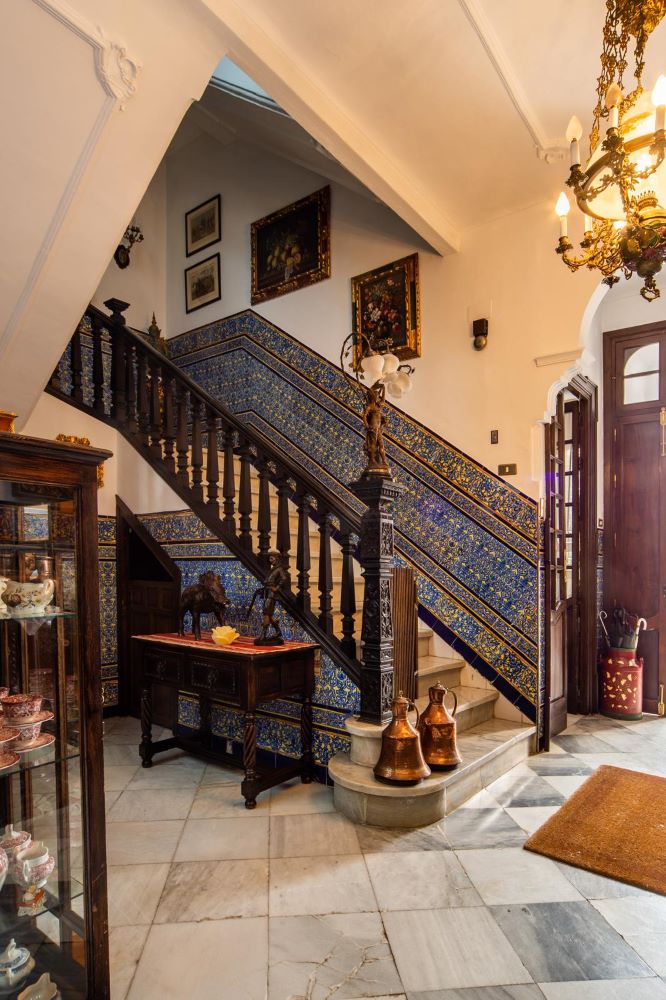
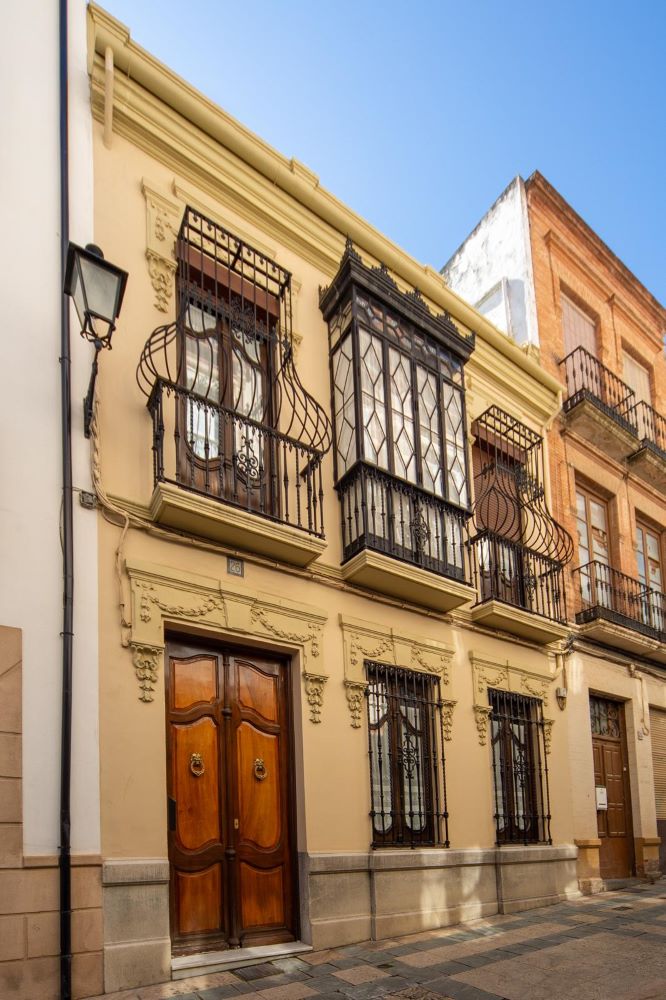
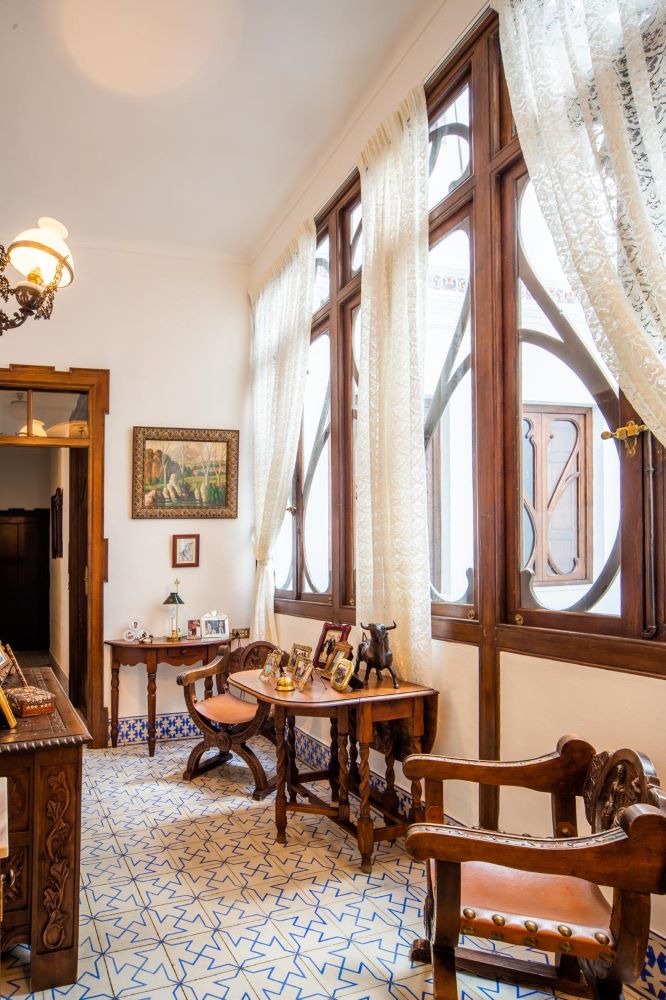
Rental Profitability Calculation for the Ronda Townhouse – Market Conditions in 2025
| Sale Price | €570,000 |
| Official TINSA Valuation | €1,073,000 |
| Discount vs. Market Value | 47% |
| Property Type | Detached-style townhouse, 3 floors |
| Size | 523 m² built, 200 m² plot |
| Bedrooms / Bathrooms | 6 bedrooms, 4 full bathrooms + 1 guest toilet |
| Features | Art Deco style, fully furnished, sauna, terrace, private parking, located in Ronda’s historic center |
| Condition | Excellent, ready to operate immediately |
1. Short-Term Rental Income (Primary Strategy)
This property is ideal for premium holiday rentals (Airbnb, Booking, etc.) due to:
- its unique Art Deco design and historic character,
- its prime location in Ronda’s tourist heart,
- its capacity for up to 12 guests (6 bedrooms),
- the private parking space and sauna—rare amenities in the historic center.
Conservative Annual Gross Income Estimate
High Season (April–October, 210 days):
— Average nightly rate: 1,000 €
— Average occupancy: 75%
→ Income: 210 × 0.75 × 1,000 = 157,500€
Low Season (November–March, 150 days):
— Average nightly rate: 500€
— Average occupancy: 35%
→ Income: 150 × 0.35 × 500 = 26,250€
✅ Total Annual Gross Income: 183,750€
💸 2. Annual Operating Expenses
| Property management (15%) | 27,500 |
| Platform commissions (10%) | 18,400 |
| Electricity, water, internet | 3,500 |
| IBI (local property tax) | 1,200 |
| Insurance (multi-risk + rent default) | 800 |
| Cleaning & linen replacement | 6,000 |
| Maintenance & amortization reserve | 5,000 |
| Total Annual Expenses | €62,400 |
Note: These figures reflect current market realities for premium properties in Andalusia in 2025.
💰 3. Net Profit & Return on Investment
- Annual Net Profit:
€183,750 – €62,400 = €121,350 - Net Yield on Purchase Price (€570,000):
(121,350 / 570,000) × 100 ≈ 21.3% per year - Net Yield on Market Value (€1,073,000):
(121,350 / 1,073,000) × 100 ≈ 11.3% per year
✅ In other words: by purchasing €503,000 below market value, you achieve more than double the return of the average investor.
📦 4. Additional Advantages
- Future Capital Appreciation:
A resale in 2–3 years could generate a €400,000–€500,000 profit as the property returns to its official TINSA valuation. - Low Competition:
Premium properties like this in Ronda’s historic center are extremely rare. Demand is strong and steady from families, wedding parties, private event organisers, and VIP clients. - Usage Flexibility:
You can rent the entire house, rent part of it, use it personally for 2–3 weeks per year, or host exclusive events. - Regulatory Protection:
Unlike Madrid or Barcelona, Andalusia does not impose rental price caps, still issues VFT tourist rental licenses, and has no bans on short-term rentals.
🔚 Conclusion
Purchasing this townhouse is not just an investment—it’s a once-in-a-decade opportunity because it allows you to:
- Achieve a net yield of over 21% annually—four times higher than the Spanish average (5–6%);
- Realise a €500,000 capital gain on a future sale;
- Own a highly liquid, appreciating asset in one of southern Spain’s most desirable locations.
As the investor at SubastaNomics writes:
“Buy cheap the property you plan to rent.”
That’s rule number one.
And in this case, you’re buying 47% below market value.
Ready to Take the Next Step?
We provide end-to-end support for your purchase:
- We verify all documentation and assess VFT tourist license eligibility;
- We help you obtain all required permits and certificates;
- And we connect you with a trusted property management company to maximise your returns from day one.
